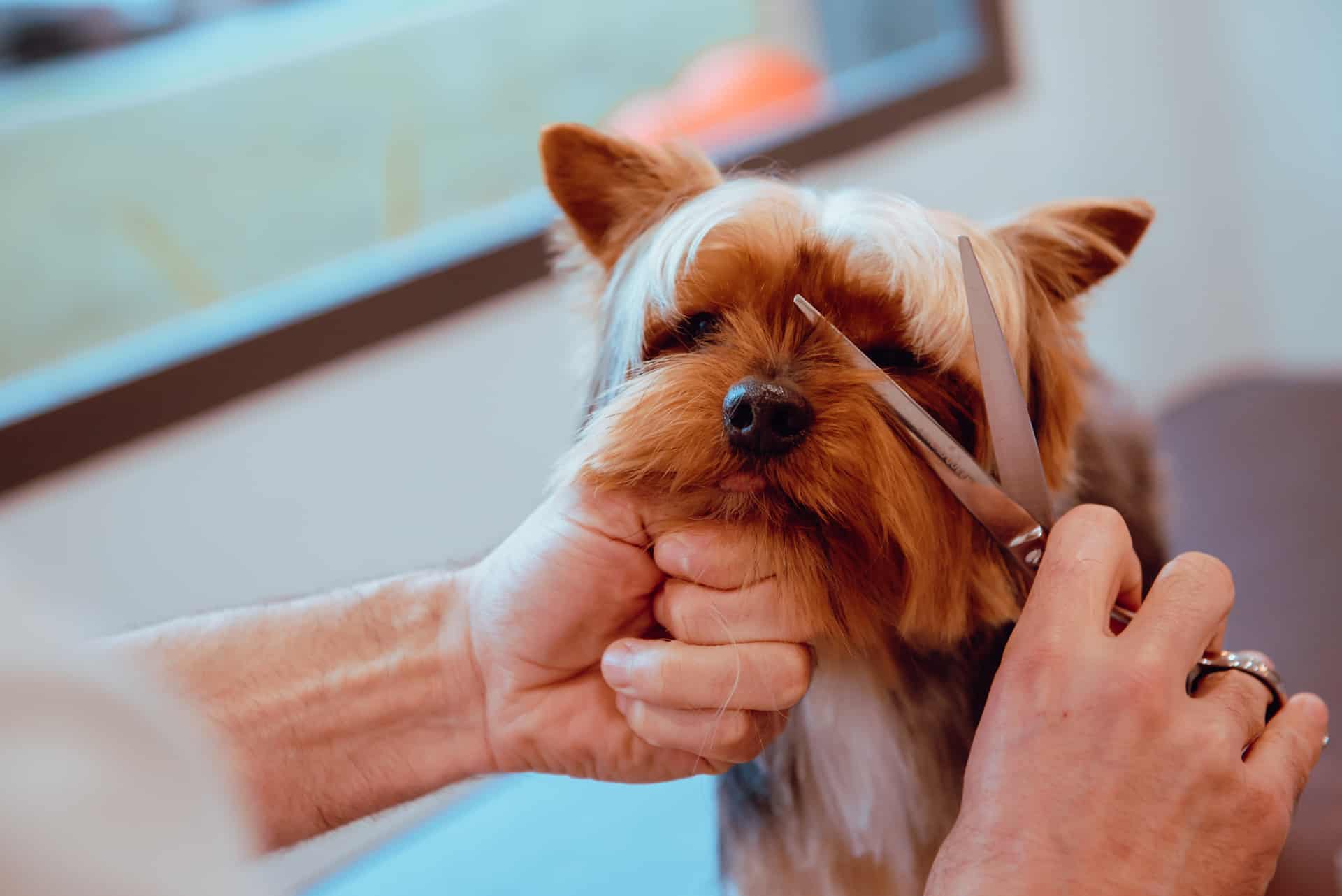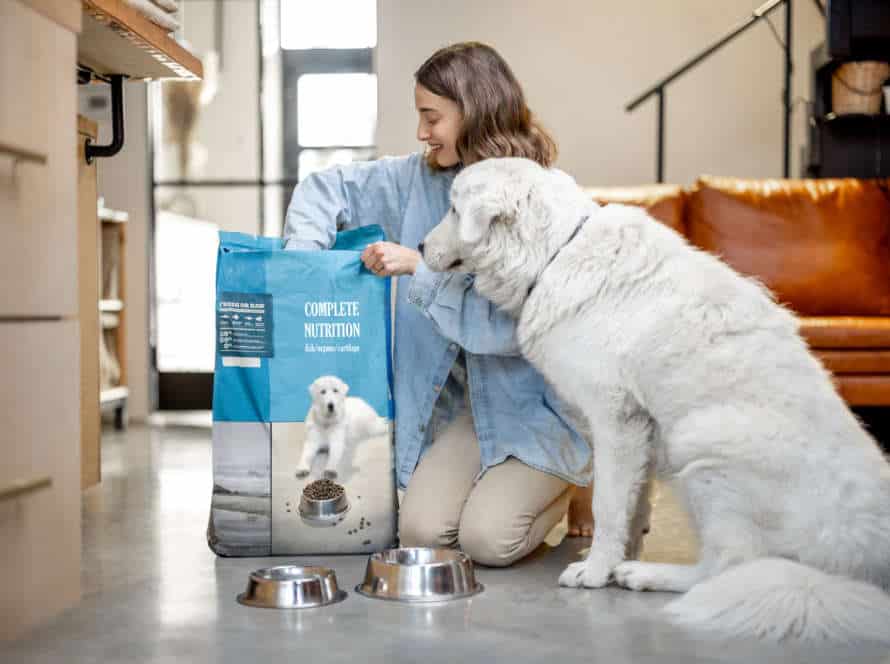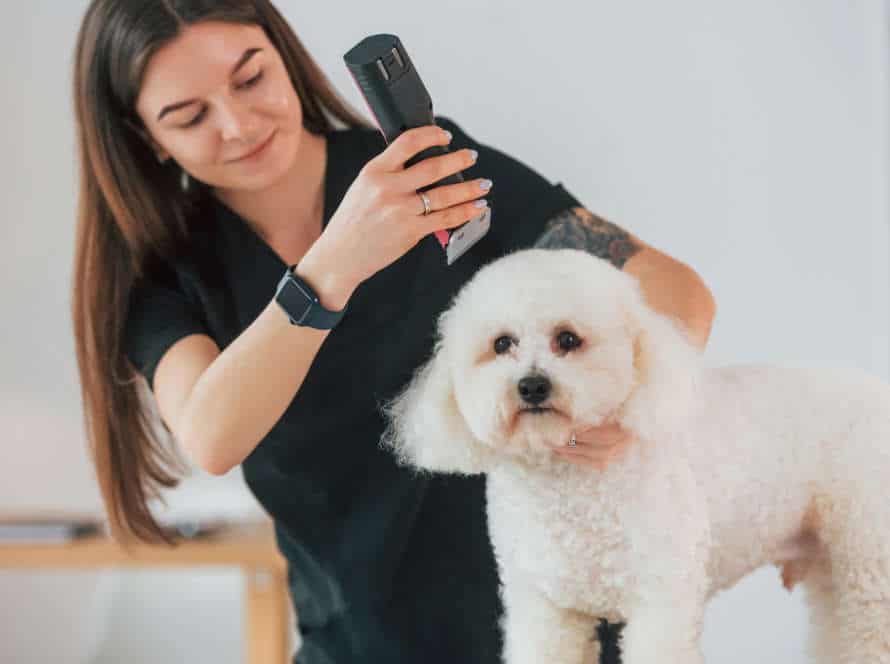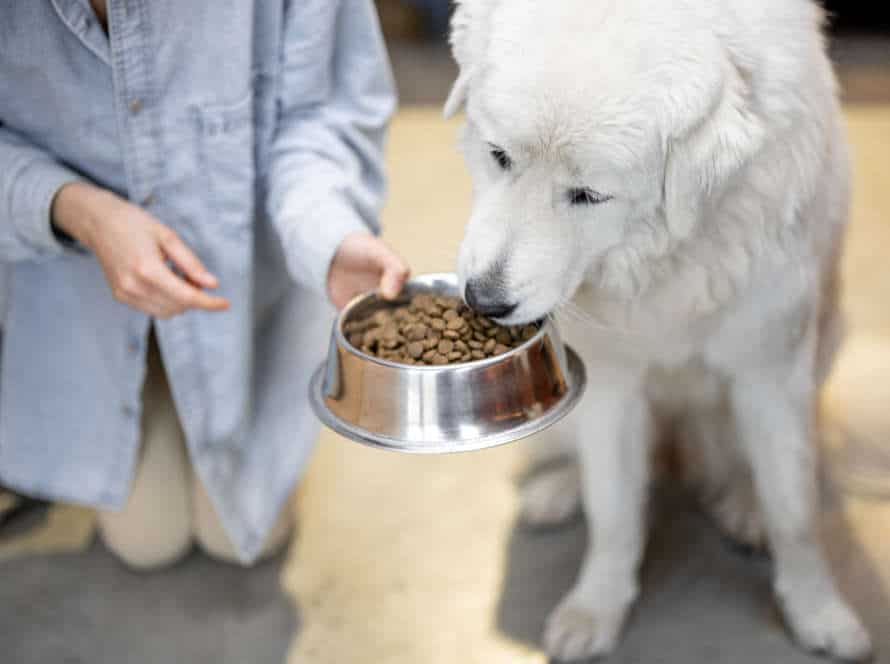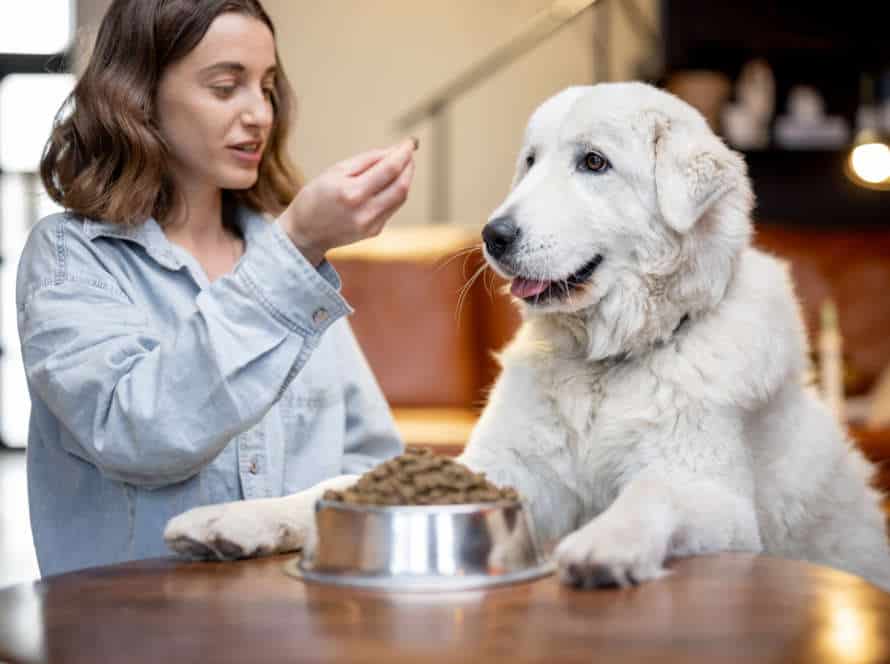Mastering the Art of Dog Grooming: Tips for Success
Perfect your dog grooming skills with these tips!
- Start by bathing your pup with warm water and a dog-friendly shampoo.
- Then, trim their fur with sharp scissors. Cut off any matted hair and excess.
- For long-haired dogs, brush gently with a slicker brush or comb.
- Clip their nails with sharp clippers to prevent breakage and injury.
- Clean their ears with a damp cloth or cotton ball to avoid infection.
By following these tips, you’ll be an expert in no time! Your pup will look and feel great after every grooming session.
Understanding the Importance of Dog Grooming
Dog grooming is essential! It keeps your pup healthy and looking their best. Not only does it keep the coat and skin in great shape, but it can also help spot any potential health issues. Appreciating the value of dog grooming and understanding the basics can make your pet healthier and happier.
So, let’s explore the basics of dog grooming!
Benefits of regular dog grooming
Grooming your dog regularly is important for their appearance, health, and happiness. Here are the benefits:
- Avoids fur matting & tangling – Grooming stops fur from pulling on the skin, which can cause discomfort and infections.
- Keeps the skin & coat healthy – Brushing encourages natural oil production, prevents dryness, and protects against the elements.
- Quickly spot health issues – Regular sessions help you notice any lumps, bumps, or irritations early on.
- Strengthens the bond & training – Grooming provides an opportunity to bond and build trust. It also gets your pup used to human touch, so it’s easier to train them.
Pro Tip: Make grooming at home a positive experience with treats and praise.
Consequences of neglecting dog grooming
Neglecting to groom your dog can have serious consequences on their well-being and health. Here’s what can happen:
- Matted fur: Brush your dog’s fur regularly, or it can get tangled and pull on their skin.
- Skin infections: Dirty fur can create a haven for parasites, leading to diseases.
- Overgrown nails: Not trimming nails can make walking painful and cause injuries.
- Ear infections: Not cleaning their ears can lead to infections and hearing loss.
Regular grooming keeps your pup looking, smelling, and feeling their best!
How often should you groom your dog
Grooming your pup is essential for their wellbeing! It helps them feel and look good. How often you groom them depends on breed, coat type, and daily activities. Short-haired doggos may need grooming once a week. Long-haired breeds may need brushing and haircuts daily. Pooches who spend a lot of time outdoors or in the water may need more frequent grooming to avoid mats or tangles.
Apart from coat health, grooming also involves trimming nails, cleaning ears and teeth, and checking for fleas and ticks. Generally, it’s good to groom them every 4-6 weeks. Certain breeds may need more frequent sessions. Ask your vet or a professional groomer if you’re not sure about grooming needs.
Pro tip – Regular grooming keeps fur clean and healthy and helps detect skin issues or health problems early.
Essential Tools for Successful Dog Grooming
Grooming your pup is key for their health and contentment. To do it properly, you need the right tools. Here are a few that every dog groomer should have in their toolbox.
Essential items include:
- Brushes
- Combs
- Nail clippers
- Scissors
- Shampoo
- Towels
- A blow dryer
These are all important for successful dog grooming!
Types of brushes and combs
To groom your pup successfully, you must use the right brush and comb. Different types are available, each with its own purpose.
- Slicker brush: This brush has short wires close together on a flat surface. It helps to free tangles and matted fur.
- Pin brush: With metal bristles and pins on the ends, this brush is great for smoothing and detangling longer and medium coats.
- Bristle brush: Natural bristles remove dirt and excess fur from shorter coats. It also massages their skin and boosts circulation.
- Undercoat rake: Sharp teeth remove thick double coats like huskies or golden retrievers.
- Comb: This tool gets rid of any remaining tangles and makes sure the fur lies flat.
Using a combo of these tools will make your pup’s coat look great, tangle-free and healthy!
Clipper blades and scissors
Clipper blades and scissors are two must-haves for any dog groomer. Clipper blades help trim fur and cut matted hair. They come in various sizes. Smaller blades work best for areas like the paws. Longer ones are great for body grooming.
Scissors are perfect for precision trimming, like on the face, ears, and tail. Straight, curved, and thinning scissors all exist.
Using the right blades and scissors for the job is key. Invest in good quality ones for an easier and more efficient grooming experience.
Pro Tip: Keep clipper blades and scissors clean and oiled to make them last longer and groom more smoothly.
Shampoos and conditioners
Shampoos and conditioners are must-haves for successful dog grooming. The right products and techniques make the process easier and more effective. When selecting shampoo and conditioner for your pup, take into account their coat type, skin sensitivity, and any special grooming needs. Popular options are:
- Oatmeal shampoo and conditioner – great for dogs with dry or itchy skin. It can soothe and moisturize their skin.
- Hypoallergenic shampoo and conditioner – perfect for pups with sensitive skin, since these products are free from harsh chemicals and fragrances.
- Deodorizing shampoo and conditioner – they help eliminate odors and keep your pooch smelling fresh.
Remember to always follow the directions on the product label, and rinse your dog thoroughly after each use. Use a quality conditioner to add shine and extra strength to their coat.
Pro tip: Brush your dog’s coat before and after bathing to get rid of tangles and matting, and to spread natural oils throughout their coat, leaving it glossy and healthy.
Brushing and Bathing Your Dog
Brushing and bathing are important for a dog’s self-care. Brushing removes dirt and debris. It also spreads natural oils, and keeps fur and skin healthy. Bathing removes dirt, reduces odours, and prevents infections. To get the best results, here are some helpful tips:
Brushing techniques for different coat types
Different dog breeds have different coat types. Each needs its own brushing technique for shine, health, and cleanliness.
Short-coated: Use a rubber curry brush. Massage skin and remove lose hair and dirt. Follow with a soft-bristle brush to polish.
Long-coated: Slicker brush for tangles, mats, and loose hair. Finish with a wide-toothed comb.
Curly-coated: Pin brush to avoid matting and take out loose hair. Finish with a slicker brush for fluffing and shape.
Double-coated: Undercoat rake to remove loose hair from the dense undercoat. Follow with a slicker brush for the topcoat.
Regular brushing keeps coat looking good and prevents skin irritation, shedding, and infestations.
Pro Tip: Brush in direction of hair growth. Give treats and praise to make grooming a positive experience.
Bathing tips and tricks for different breeds
Bathing your pup can be a challenge, especially when it comes to different breeds. Here are some tips to make it easier.
- Short Hair Breeds: Bathe them every couple of months if they don’t get too dirty. Deshedding tools can help remove excess hair before.
- Long Hair Breeds: Need more frequent baths, usually once a month. Use a conditioning treatment to soften the hair.
- Double Coat Breeds: Huskies and Malamutes have a thick undercoat that traps dirt and odors. Bathe them every 2-3 months and use a special shampoo.
- Sensitive Skin Breeds: Hypoallergenic shampoo is best to prevent irritation. Lukewarm water is better than hot.
- Pro Tip: Positive reinforcement and treats can make bath time enjoyable for your furry friend!
Drying and brushing after a bath
Drying and brushing your pup after a bath is key in the grooming process. For a healthy and great look, here’s what to do:
- Towel dry your pup: Use a clean, dry towel and rub their fur to absorb water.
- Hairdryer: Put it on the lowest heat and speed setting. Stay a safe distance from their skin.
- Brush their fur: Remove tangles and mats. Use a slicker brush for long-haired breeds and a bristle brush for short-haired breeds.
These steps will give your pet a clean and healthy coat!
Trimming and Clipping Your Dog’s Coat
Trimming and clipping your pup’s coat? Necessary! It’ll make them look great, and keep their fur healthy and free from mats. Tools and techniques exist for trimming and clipping. Let’s discuss the tools and how to use them correctly.
How to trim your dog’s nails
Trimming your pup’s nails is a must-do in dog grooming. Follow these steps for their health and comfort:
- Use tools like clippers and make sure your pooch is comfy.
- Trim only a bit of the nail at a time.
- Don’t cut the quick – it’s the sensitive part with blood vessels and nerves.
- For black nails, use a penlight to locate the quick.
- Smooth out rough edges with a file or grinder.
- Treats and positive reinforcement help, too!
- If it’s too much, take them to a groomer or vet.
Pro tip: Regular trims make the process easier in the long run.
Trimming ear hair and excess fur around paw pads
Trimming your pup’s ear hair and excess fur around the paw pads is important. It keeps dirt and bacteria away, which can lead to infections. And it also helps with matting and tangling of hair.
Here’s what to do:
- Get your pup ready: Make sure they’re relaxed and comfy.
- Clip the hair around the paw pads: Use clippers or scissors. Don’t cut too close to the paw pads.
- Trim ear hair: Gently use scissors to trim the extra hair around the ear canal openings.
Pro tip: If you’re new to dog grooming, get a pro to help you out. They’ll show you the right technique to get great results.
Different clipping styles for different breeds
Different dog breeds need different clipping styles for the best look, plus hygiene.
For example:
- Poodles – style their fur into “poodle cuts” with a clipper. Fur needs clipping every 6-8 weeks.
- Golden Retrievers – have thick double coats that shed. Brush and trim to prevent matting and skin irritation. Use clipper blade size #7 or #5 to shear fur.
- Terriers – wiry coats need minimal trimming. Use scissors for stray hairs, around ears and paws, plus an even trim all over.
- Bulldogs – short, smooth coats with little shedding. Brush off dirt and hair. Trim hair around paws, ears and anus – gentle as skin’s sensitive.
Clipping styles are essential for health, appearance and grooming. Plus, it supports bond with pet.
Managing Common Dog Grooming Challenges
Grooming a dog? Challenge accepted! Even the most experienced pet groomers find it hard. Recognize the issues that come up. We will discuss some. Here are tips for succeeding. Common dog grooming challenges? We got it covered!
Dealing with matted or tangled fur
Dealing with matted or tangled fur can be a struggle for any pup parent. Here are some tips to make it easier:
- Get the right tools. Buy a good grooming brush and comb that’s perfect for your doggo’s coat. If they have a long, thick coat, maybe get a dematting tool.
- Be gentle. When working on matted fur, use a calm touch. No tugging or pulling!
- Take breaks. If your pup gets antsy, let them rest and come back to it later.
- Get help. If you’re not comfy or skilled enough to handle it, ask a professional groomer. They have the tools and know-how for even the toughest mats and tangles.
Remember to reward your pup with treats and praise during grooming. Pro tip- Regular grooming can help stop mats and tangles from forming.
Treating dry or itchy skin
Dry or itchy skin in dogs? Common grooming challenge.
Manage it with these tips:
- Check for health conditions.
- Switch to high-quality dog food with fatty acids.
- Give regular baths with moisturizing shampoo/conditioner.
- Brush coat daily to distribute natural oils.
- Make sure your dog gets exercise + hydration.
Pro tip: If skin issues persist, consult vet. Diagnosis + treatment plan.
Handling nervous or aggressive dogs during grooming
Groomers must be ready to handle nervous and aggressive dogs. But, with the right techniques and approach, it’s possible to manage tricky pets. Here are some tips:
- Stay calm and confident but gentle.
- Reward good behavior with treats.
- Don’t punish or scold.
- Work slowly and patiently.
- Try calming aids like oils or pheromone sprays.
- If the dog’s behavior is severe, get help from a pro trainer or behaviorist.
Remember, grooming should be fun for both dog and groomer. Following these tips will make it happen.
Frequently Asked Questions
1. What are the essential tools for dog grooming?
To master the art of dog grooming, you will need certain essential tools including brushes, combs, clippers, scissors, and shampoo. You may also need ear cleaners, nail clippers, and a good quality blow dryer.
2. How often should I groom my dog?
The frequency of grooming your dog will depend on the breed, coat type, and the activities of the dog. Generally, dogs with long and thick fur will need to be groomed more frequently than dogs with short hair. You should aim to groom your dog at least once a week to maintain a healthy coat.
3. Can I groom my dog at home, or do I need to go to a professional groomer?
You can groom your dog at home; all you need is the right tools and some know-how. However, if your dog has a particularly intricate coat or if you are unsure about how to groom your dog properly, it may be best to go to a professional groomer.
4. How can I make grooming a pleasant experience for my dog?
To make grooming a pleasant experience for your dog, start early, and use positive reinforcement. Offer treats or praise while you are grooming. Start with short grooming sessions and gradually increase the duration. You should also use gentle, soothing voices while you are grooming your dog.
5. How should I bathe my dog?
Before you bathe your dog, brush him thoroughly to remove any tangles or matted fur. Then, wet your dog with lukewarm water and apply shampoo, starting at the neck and working your way down to the tail. Rinse thoroughly and dry your dog with towels or a blow dryer.
6. How can I prevent my dog from getting matted fur?
To prevent your dog from getting matted fur, you should brush him regularly, especially if he has long hair. Focus on the areas where tangles and mats are most common, such as behind the ears, under the legs, and around the tail. Using a detangling spray or conditioner can also help to prevent mats.

